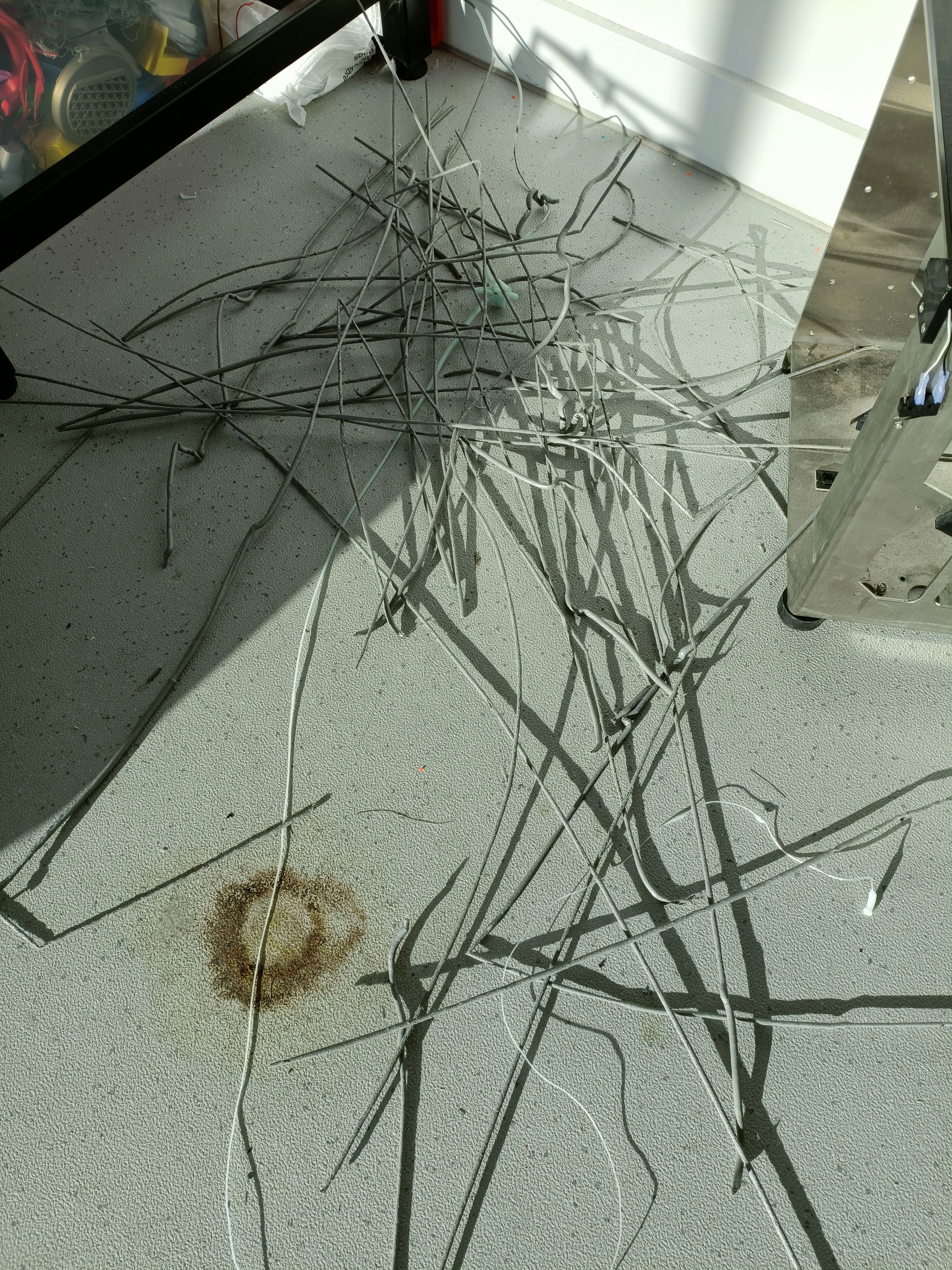Filament Furnace [gd0042]
A low cost filament extruder to try and create low cost GF PBT filament to replace my PLA usage.
A low cost filament extruder to try and create low cost GF PBT filament to replace my PLA usage.
To make the experience fit your profile, pick a username and tell us what interests you.
We found and based on your interests.
There's no tangible benefit to making a filament extruder if there's no (exotic) pellets or masterbatches to use with it.
I probably should've dried it but I didn't so that could be a reason to retry the experiment. Long story short, it ended in failure.
These are the pellets I have: https://poliplasticpellets.com/shop/heavy-plastic-pellets/
These are medical grade apparently, but I can only imagine that this specific formulation is for something that needs low viscosity because that's exactly what this PET is when heated. There's no middle ground either. After a few hours, I was able to hone it down to probably 248C, with 245/6C at the nozzle eventually leading to it coming out "frozen fresh out of the nozzle" (I assume it crystalized) and 249C being a hot liquidy goop of uncoolable plastic. When molten, the PET doesn't have enough strength to hold up more than about 20cm of it's own weight.
I started at 269C as recommended by 3Devo but that was wayyy too hot so I went down to 239C and nothing extruded. The pellets I have don't have a datasheet, so I looked around the internet and most that did melted in the 245-250C range with only 2 being higher. 259/259/259/249 was near liquid so I tried 245 at the nozzle and eventually nothing would come out; the crystalized PET would slowly close the nozzle. My last test was at 252/252/252/249 and I feel like I'm right on the threshold between crystalisation before or after the nozzle, with the extrusion being closer to the latter.
The PET is pretty flexible when amorphous while being transparent, and a nice white when semicrystaline. I want the latter due to the higher melt temperature and other bonuses, as I found out in this paper: http://fbe.balikesir.edu.tr/dergi/20111/BAUFBE2011-1-3.pdf
Wow I was not expecting to find anything but I've found the seller again here. No idea why Google gave me no results for things like "injection pellets" but the specific name got results. Looks like I actually got the G4 and not the 30% G6 version of Ultradur I thought. Price is up from £60 in 2020 to £105 today.

In the previous log, I mentioned that I found some 16% glass fibre ABS pellets. They came on Thurs and I tried them on Friday with the 3Devo my university just happened to have, wearing a gas mask. I couldn't smell the odour unless a quick slip of air got past the face seal.
It has a very similar extrusion issue to the GF PBT. It seems that if the extrusion is left to its own devices, it looks kind of nice, wheras if I attempt to pull it so that it approaches 1.75mm, it all thins out. It's like the extrusion is "dry" and not fluid.
Cleaning also took a while, with this marble-like extrusion:
That thicker extrusion was also notably stiff, making redirect-from-the-floor attempts challenging. It's a very nice looking colour though.
Oh right I want to mention that I was worried about flow rate when I saw 3cm^3 / 10min in the datasheet, but this stuff extrudes fast! If it could cool fast enough and be stretched to 1.75mm, I think 1m under 10s is doable when at 10RPM.
Anyway, my current takeaways is that filled pellets may not play nice with the extrusion method of starting with a wide diameter orifice and tensioning the material to reduce its diameter. It looks like there needs to be some amount of compression or the fibers move at a different rate to the material. Like the GFPBT, it looks like this material would've had excellent anti-ooze properties.
That could be a problem. Slightly more info here but basically, my focus is going to be for these pellets of PET until I can find another source of Ultradur GFPBT. Obviously such a search won't be necessary if the sample pellets I have are non-printable.
[Edit 1]
I've found some ABS that is 16% glass fibre filled and comes grey straight out of the gate (I'm aiming for white or grey filament predominantly). Here's the datasheet.
Using the 3Devo my university just happens to have, I was able to extrude some PBT. However there were voids and the thickness was unstable.
I tried again on another day, and after finding recommended temperatures of 260C, I got something a tad better but still not great (top is first attempt, bottom is second) or consistent.
I thought to add some PET for processability, and was able to get something barely printer-usable after hours of extruding:
My hypothesis is that the 90 degree angle in the 3Devo is not playing nicely with the glass fibre reinforced pellets, meaning the PBT will clog like cholesterol in an artery and the PET would melt past it.
Create an account to leave a comment. Already have an account? Log In.
Become a member to follow this project and never miss any updates